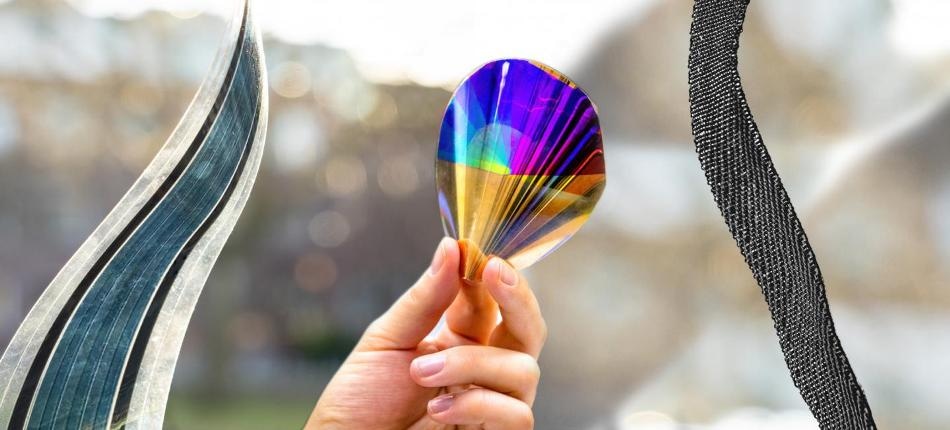Jan 16 2019
Scientists at the Chalmers University of Technology, Sweden, have found out a simple new tweak that could make organic electronics two times more efficient. This new discovery, which deals with “double-doped” polymers could benefit a wide range of technologies, such as plastic-based solar cells, bioelectronics, and OLED displays.
 Examples of organic electronics: flexible solar cells (left, supplied by Epishine AB), electronic paper (center) and piezoelectric textiles (right). (Image credit: Johan Bodell/Chalmers University of Technology)
Examples of organic electronics: flexible solar cells (left, supplied by Epishine AB), electronic paper (center) and piezoelectric textiles (right). (Image credit: Johan Bodell/Chalmers University of Technology)
Most of the electronics used in day-to-day life are based on inorganic semiconductors, for example, silicon. A process known as doping is vital to their function. In this process, impurities are weaved into the semiconductor to improve its electrical conductivity. It is this process that enables a variety of components in solar cells and LED screens to function.
This doping process is similarly very crucial to organic, that is, carbon-based, semiconductors as well. From the time when electrically conducting plastics and polymers were discovered—a field for which a Nobel Prize was awarded in 2000—research and development of organic electronics has gained momentum. One example is OLED displays, which are already on the market, for instance, in the most recent generation of smartphones. Other applications have not yet been fully accomplished, owing to the fact that until now, organic semiconductors have not been efficient enough.
In organic semiconductors, doping occurs through a process called redox reaction. That is, a dopant molecule accepts an electron from the semiconductor, which increases the electrical conductivity of the semiconductor. If the semiconductor has the ability to react with more dopant molecules, its conductivity increases, at least up to a specified limit, after which the conductivity decreases. At present, the fact that the dopant molecules can only exchange one electron each has determined the efficiency limit of doped organic semiconductors.
However, recently, in an article in the scientific journal Nature Materials, Professor Christian Müller and his team, along with colleagues from seven other universities, show that two electrons can be moved to every dopant molecule.
Through this ‘double doping’ process, the semiconductor can, therefore, become twice as effective.
David Kiefer, Study First Author, PhD student, Chalmers University of Technology.
Christian Müller states that this breakthrough is not based upon some eminent technical achievement. Rather, it is just a case of observing what others have not observed.
The whole research field has been totally focused on studying materials which only allow one redox reaction per molecule. We chose to look at a different type of polymer, with lower ionization energy. We saw that this material allowed the transfer of two electrons to the dopant molecule. It is actually very simple.
Christian Müller, Professor, Polymer Science, Chalmers University of Technology.
The finding could enable further developments to technologies which are currently not competitive enough to make it to the market. One challenge is that polymers just do not conduct current well enough, and hence making more effective doping techniques has been a focus for a long time for acquiring better polymer-based electronics. Now, this increase in the conductivity of polymers by two times, while utilizing only the same quantity of dopant material, over the same surface area as earlier, could mark the tipping point required for the commercialization of a number of emerging technologies.
“With OLED displays, the development has come far enough that they are already on the market. But for other technologies to succeed and make it to market something extra is needed. With organic solar cells, for example, or electronic circuits built of organic material, we need the ability to dope certain components to the same extent as silicon-based electronics. Our approach is a step in the right direction,” says Christian Müller.
The finding provides basic knowledge and could help thousands of scientists to realize advances in bioelectronics, thermoelectricity, and flexible electronics. Christian Müller’s research group is itself researching numerous different applied areas, with polymer technology at the heart. In the midst of other things, his team is investigating the development of organic solar cells and electrically conducting textiles.